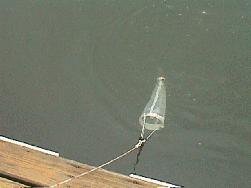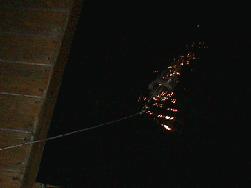

Plankton Sampling
Plankton is composed of microscopic plants and animals, which drift in the ocean currents. Phytoplankton (the plants) are a major source of food and oxygen (via photosynthesis) in our planet's overall ecology. Zooplankton (the animals) feed mostly on phytoplankton, and are among the most abundant animals on earth. Populations of individual plankton species may vary considerably during the course of the year. As the waters warm in the spring and summer, many larval forms of invertebrates and fish appear in great numbers. It is important for biologists to study these changes to obtain information about the productivity of the waters sampled. Productivity is related to the density of plankton (number of plankton in a given volume of water) and gives biologists an idea of how much life an area will support. In this activity, you will determine the density of plankton in terms of the number of plankton or the volume of plankton per cubic meter of seawater. Samples can be collected at different depths, different times of day, different tides and even at night.

Want to find out more about these organisms and their roles?....go to the
Plankton Researchers Homepages
. or the Friday Harbor Plankton Pageto see how the methods used to record the data.
Introduction - Volume of Sample - Numbers in Sample 1
Numbers in Sample 2 - Volume of Water Sampled